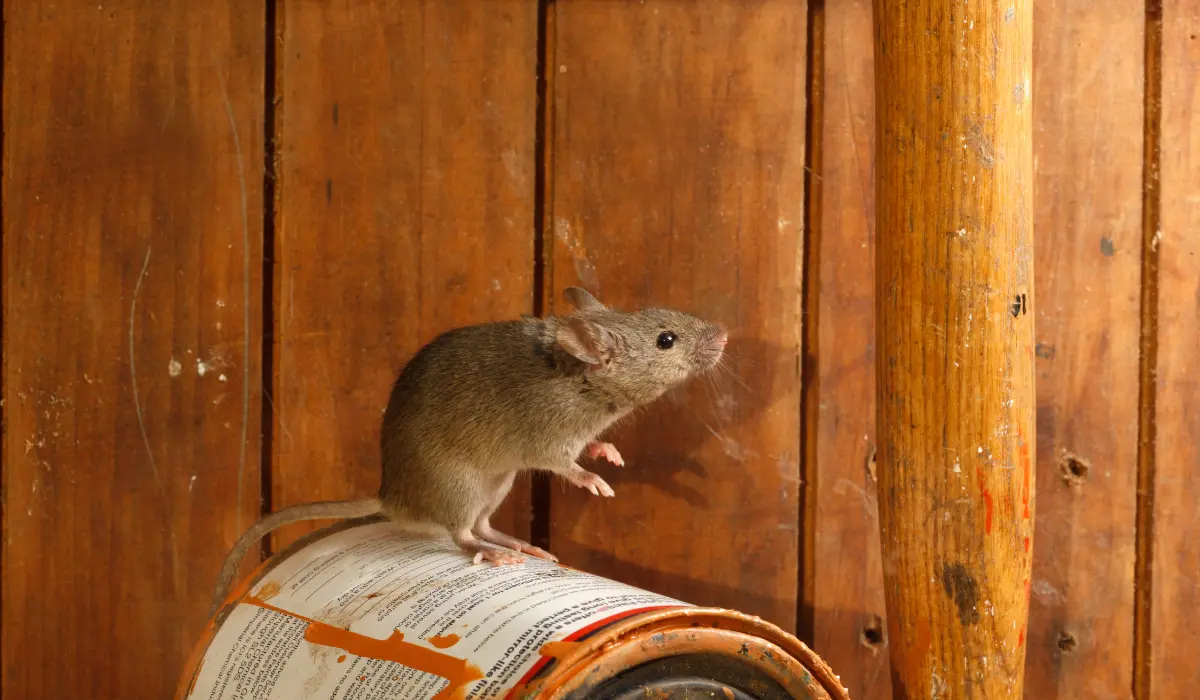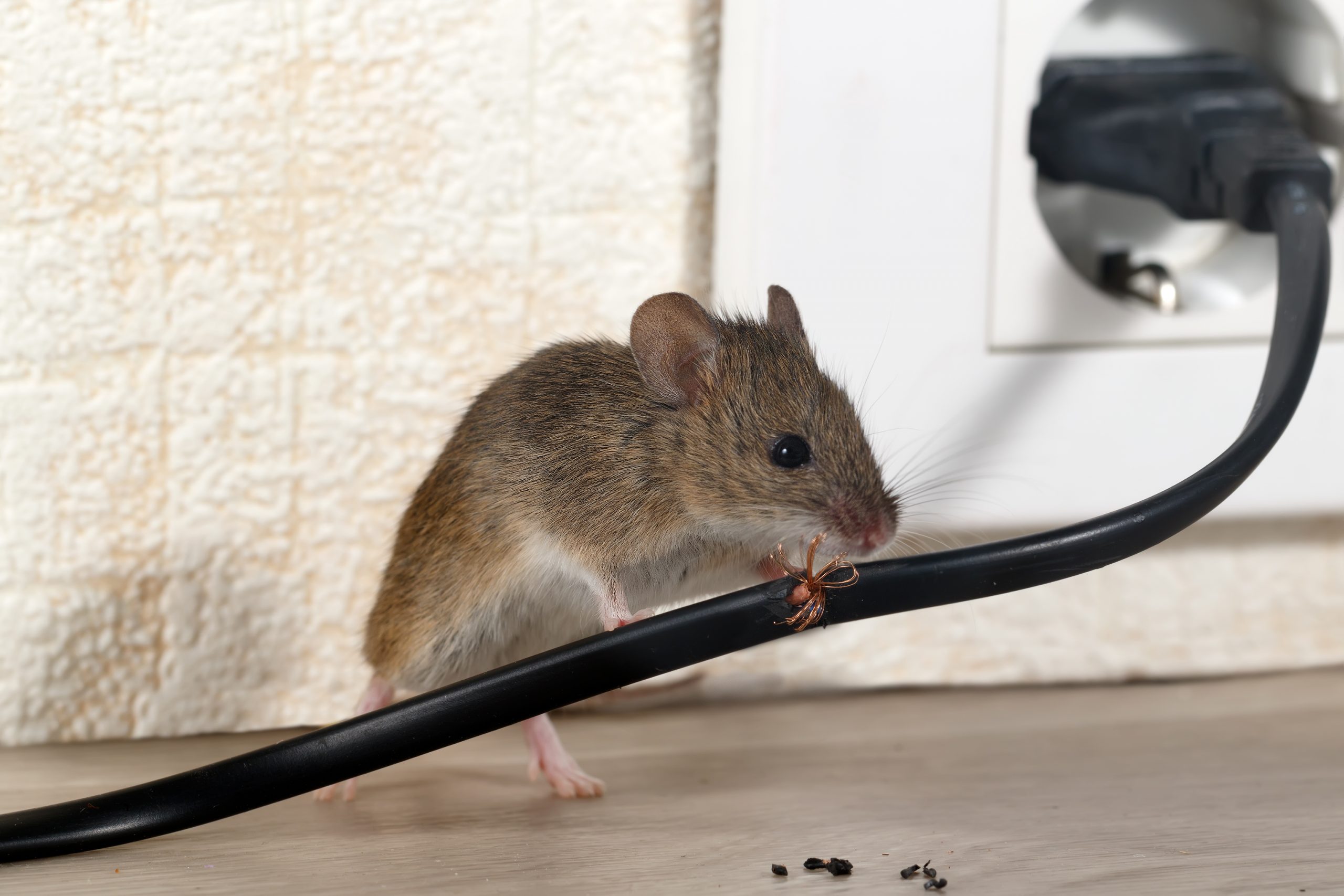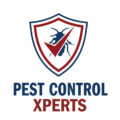Florida’s subtropical climate—marked by warm temperatures, moderate winters, and high humidity—provides mice with the ideal year-round conditions to feed, breed, and seek shelter in both residential and commercial properties. In communities such as Lehigh Acres, where suburban growth meets semi-rural landscapes, mice can infiltrate unnoticed if occupants don’t act swiftly at the first sign of trouble. This service page highlights why mice thrive in Florida, the red flags indicating an infestation, and why a professional mice exterminator is key to ensuring a pest-free, secure environment.
Whether you live in Lehigh Acres or manage housing in Immokalee or Labelle, recognizing mice’s behavioral patterns—and addressing their presence quickly—helps protect your home, tenant well-being, and the daily comfort of everyone within the property.
Why Mice Thrive in Florida
Mild Winters
Elsewhere, subfreezing winters naturally diminish rodent populations for months. In Florida, low temperatures rarely stay below freezing for extended periods, allowing mice to continue reproducing. Indoor environments—heated or air-conditioned—maintain conditions in which mice remain active, feed consistently, and multiply.
Abundant Food Sources
Mice scavenge any available food, be it unsealed pet kibble, pantry staples in thin plastic bags, or crumbs under kitchen appliances. In growing communities like Lehigh Acres, Immokalee, or Labelle, frequent grocery deliveries, leftover produce, or open garbage bins supply mice with reliable feeding opportunities, especially if occupants don’t thoroughly safeguard their dry goods.
Constant Moisture
Frequent rain, lawn irrigation, and Florida’s inherent humidity ensure mice rarely lack for water. Even minor leaks under sinks or condensation around AC units can sustain rodents long enough for them to establish nests. In combination with easy food access, stable water sources form the backbone of mice’s survival strategies.
Rapid Breeding
A single pair of mice can produce multiple litters yearly, each containing about five to six pups. At Florida’s mild indoor temperatures, these pups mature quickly. Within weeks, they begin reproducing on their own. Small infestations can explode into full-scale rodent colonies when no immediate action is taken.
Easy Entry Points
Mice slip through dime-sized gaps around doors, utility lines, or foundation cracks. Suburban expansions and farmland edges—common in areas like Immokalee—are prime spots for displaced mice to wander indoors. Without sealing these openings, new rodents regularly move inside, exacerbating infestations.

Telltale Signs of a Mouse Infestation
- Droppings
- Mouse droppings appear as small, dark, rod-shaped pellets with tapered ends, roughly ¼ inch in length.
- Found near food sources (pantries, pet dishes) or hidden corners (attics, basements, behind appliances).
- Mouse droppings appear as small, dark, rod-shaped pellets with tapered ends, roughly ¼ inch in length.
- Nocturnal Rustling or Scratching
- Mice typically forage at night. Faint squeaking or scurrying along walls or ceilings after sundown can reveal their presence.
- Intensified noise may mean more mice are sharing the same routes.
- Mice typically forage at night. Faint squeaking or scurrying along walls or ceilings after sundown can reveal their presence.
- Gnaw Marks
- Mice must chew continuously to manage their incisors. Look for nibbled edges on furniture, cardboard boxes, plastic containers, or wiring.
- Exposed wires from gnawing raise the possibility of short circuits or electrical fires.
- Mice must chew continuously to manage their incisors. Look for nibbled edges on furniture, cardboard boxes, plastic containers, or wiring.
- Nests of Shredded Material
- Mice fashion nests from torn paper, insulation, or fabrics in hidden areas like closets, crawl spaces, or behind cabinets.
- These nests typically contain droppings or a mild musky odor, confirming active mouse activity.
- Mice fashion nests from torn paper, insulation, or fabrics in hidden areas like closets, crawl spaces, or behind cabinets.
- Strange Pet Behavior
- Cats or dogs staring at walls, barking at corners, or pawing under doors could indicate mice scurrying behind them.
- Sudden, intense pet focus on previously ignored areas often aligns with rodent presence.
- Cats or dogs staring at walls, barking at corners, or pawing under doors could indicate mice scurrying behind them.
- Unpleasant Odors
- Over time, accumulated mouse urine or large nest sites produce a stale ammonia-like smell.
- Poor ventilation (in attics or closed rooms) heightens this odor, alerting occupants to deeper issues.
- Over time, accumulated mouse urine or large nest sites produce a stale ammonia-like smell.
The Risks of Ignoring Mice
Disease Transmission
Mice can carry pathogens like salmonella in their droppings, urine, or saliva, risking contamination on kitchen counters or stored foods. Hantavirus, though less common in Florida, remains a concern if droppings aerosolize in enclosed spaces, posing respiratory hazards.
Structural and Electrical Damage
Rodent gnawing eats away at drywall edges, wood beams, or insulation. Chewed wiring may spark electrical malfunctions or fires. Repairs for such damage can be extensive and costly if infestations persist.
Rapid Colony Growth
Florida’s climate fosters continual breeding—one pair of mice can spawn dozens within months. Ignoring early signs yields a larger, entrenched population, demanding more invasive treatments and occupant disruption.
Secondary Pests
Rodent nests can harbor fleas or ticks, introducing additional pest burdens. Snakes or feral cats might arrive hunting mice, further complicating property management. A single rodent issue may cascade into multiple pest concerns.
Occupant and Reputational Impact
For property owners—particularly those renting housing or running businesses—a known rodent problem can drive away renters or customers, tarnish reviews, and cause friction with local health authorities. Homeowners suffer stress, lost sleep, and cleaning hassles at best, or expensive structural fixes at worst.
Why a Professional Mice Exterminator Is Essential
Thorough Property Surveys
A mouse exterminator locates droppings, nests, rub marks, or gnaw damage in seldom-visited corners—like attics, basements, or behind large appliances. Confirming whether you’re contending with mice versus other rodents (like rats) tailors the subsequent approach, ensuring baits or traps match the specific pest’s habits.
Strategic Baiting and Trapping
Professionals place snap traps or tamper-resistant bait stations in rodent travel paths—along walls, behind cabinets, or near nest openings. Precise positioning yields better results than random attempts, swiftly reducing the rodent population without overusing chemicals.
Exclusion and Sealing
Eliminating existing mice is part one; blocking future entries is just as important. Exterminators identify cracks, foundation gaps, or door sweeps that need upgrading or sealing. This physical exclusion prevents new rodents from wandering in after occupant or professional removal of the current infestation.
Safe Product Usage
Improperly placed poisons can endanger children, pets, or local wildlife. Licensed exterminators employ regulated rodenticides in locked boxes or specialized areas, striking mice effectively while mitigating hazards to unintended targets. Adhering to local guidelines ensures occupant well-being.
Ongoing Support
Mice can reappear if hidden pups mature or new mice find ways inside. Many professionals schedule follow-up visits, removing any trapped rodents, refilling bait, or adjusting the plan if occupant sightings persist. This cycle ensures thorough, enduring resolution in Florida’s mild climate.

Typical Methods for Mice Treatments
- Inspection and Mapping
- Professionals explore attics, walls, storage rooms, or behind appliances for droppings and chewed items.
- Identifying possible nest sites clarifies how widespread and entrenched the infestation may be.
- Professionals explore attics, walls, storage rooms, or behind appliances for droppings and chewed items.
- Trapping (Snap or Live)
- Snap traps remain a staple for rapid population reduction.
- Live traps may see use if relocation is preferred, though less common for large infestations.
- Snap traps remain a staple for rapid population reduction.
- Bait Stations
- Tamper-resistant stations hold rodenticides, ensuring only mice gain entry.
- Once consumed, mice often retreat to nests before succumbing, easing disposal but requiring occupant diligence.
- Tamper-resistant stations hold rodenticides, ensuring only mice gain entry.
- Exclusion Repairs
- Sealing holes around plumbing lines, installing door sweeps, or closing cracks in foundations denies mice re-entry.
- Techniques vary based on building type—wood, concrete, or mobile home.
- Sealing holes around plumbing lines, installing door sweeps, or closing cracks in foundations denies mice re-entry.
- Sanitation and Clutter Reduction
- Occupants must store pantry foods in sealed containers and promptly remove or wipe away crumbs.
- Clearing random boxes or piles robs mice of potential hiding spots.
- Occupants must store pantry foods in sealed containers and promptly remove or wipe away crumbs.
- Deodorizing and Disinfecting
- Cleaning droppings or nests eliminates pheromone trails that lure other mice.
- Some exterminators offer specialized sanitizing solutions for heavily soiled areas.
- Cleaning droppings or nests eliminates pheromone trails that lure other mice.
- Scheduled Follow-Up
- A few weeks post-treatment, professionals re-check droppings or occupant sightings.
- If activity resumes, they adapt baits, reset traps, or bolster exclusion measures until the property is rodent-free.
- A few weeks post-treatment, professionals re-check droppings or occupant sightings.
Service Areas: Lehigh Acres, Immokalee, Labelle
Mice can infiltrate buildings of all sizes, from suburban dwellings to rural farmhouses. This page focuses on Lehigh Acres, a fast-growing community in southwestern Florida. Our mice exterminator solutions also extend to:
- Immokalee: Known for agricultural industries, frequent produce shipments, and workforce housing—perfect breeding grounds if leftover feed or produce scraps remain unguarded.
- Labelle: A smaller city mixing rural charm and expanding developments, each at risk if leftover pet food or open bins remain unsealed and appealing to mice.
Under Florida’s year-round mild climate, these areas see mice remain active, seeking indoor shelter and continuous food. Early occupant detection and swift professional extermination remain essential to block a colony’s growth.
Why Choose Us
Florida-Centric Strategies
We adapt proven rodent control methods to southwestern Florida’s environment, considering the region’s mild winters and occupant habits in Lehigh Acres, Immokalee, or Labelle. From effectively placed traps to occupant education, our approach merges synergy with local conditions for best results.
Detailed Surveys and Customized Plans
Our technicians track droppings, nest evidence, or rub marks, zeroing in on mice’s favored hideouts. Depending on infestation severity—one room or an entire building—we design a plan that might combine mechanical traps, tamper-resistant bait stations, and thorough exclusion work.
Safe, Targeted Extermination
While rodenticides remain an option, we apply them responsibly in locked stations. Snap traps or mechanical solutions often complement limited pesticide use, ensuring occupant or pet safety. Our measured approach focuses on lethal results for mice, not widespread chemical exposure.
Emphasis on Prevention
During or after removing current mice, we help property owners seal gaps, store food securely, and fix leaks or moisture problems. Cutting off future resources and access points cements lasting success in a region where mice never face seasonal slowdowns.
Ongoing Monitoring and Re-checks
Rodent pups may surface weeks after the initial elimination, or new mice might discover unsealed cracks. Many professionals schedule returns or encourage occupant feedback if droppings reappear. This cycle ensures enduring results in southwestern Florida’s conducive year-round conditions.

Next Steps
Are you finding droppings in kitchen cabinets, hearing scuttling behind walls at night, or noticing chewed pantry goods? Contact us to learn more or schedule your service. Our mice treatments and exterminator approach in Lehigh Acres, Immokalee, and Labelle combine comprehensive inspections, strategic trap/bait placements, occupant-friendly guidance, and robust exclusion steps—eradicating mice and stopping their return.
Prompt engagement spares you mounting damage, reduces the chance of contaminated surfaces, and alleviates stress for everyone on the property. Count on our Florida-tailored expertise to navigate southwestern Florida’s mild climate and ensure rodents don’t find a foothold in your home or business, preserving cleanliness and safety for years ahead.
Maintaining a Mouse-Free Property
After professionally removing mice, ongoing vigilance prevents re-infestation:
- Store Food Properly
- Keep cereals, grains, and pet food in solid plastic or metal containers—thin cardboard invites gnawing.
- Regularly wipe counters and floors to remove crumbs, and empty trash daily.
- Keep cereals, grains, and pet food in solid plastic or metal containers—thin cardboard invites gnawing.
- Fix Leaks and Damp Areas
- Mice need water—repair dripping faucets, AC leaks, or roof seepage promptly.
- Ventilate damp zones like crawl spaces or basements to reduce moisture buildup.
- Mice need water—repair dripping faucets, AC leaks, or roof seepage promptly.
- Declutter and Organize
- Cluttered garages, sheds, or utility rooms provide concealment for mice.
- Using clear plastic bins helps you spot droppings or chew marks early.
- Cluttered garages, sheds, or utility rooms provide concealment for mice.
- Seal Entry Points
- Inspect windows, doors, and foundation cracks. Plug holes with caulk, steel wool, or hardware cloth.
- Installing door sweeps blocks mice from crawling under exterior doors.
- Inspect windows, doors, and foundation cracks. Plug holes with caulk, steel wool, or hardware cloth.
- Pet Food Management
- Serve pets on a schedule—don’t leave bowls out overnight.
- Dispose of or store any uneaten food in sealed containers.
- Serve pets on a schedule—don’t leave bowls out overnight.
- Trash Can Care
- Keep outdoor bins closed tightly, stored slightly away from walls to discourage rodent approach.
- Wash cans regularly to eliminate lingering food odors.
- Keep outdoor bins closed tightly, stored slightly away from walls to discourage rodent approach.
- Regular Checks
- Inspect for fresh droppings in seldom-used rooms or behind appliances monthly.
- If you suspect renewed rodent signs, call for re-treatment quickly before populations rise again.
- Inspect for fresh droppings in seldom-used rooms or behind appliances monthly.
These steps, layered with professional guidance, ensure that homeowners in Lehigh Acres, Immokalee, or Labelle maintain rodent-free conditions. While Florida’s mild winters offer mice easy breeding avenues, your consistent housekeeping, sealed structural gaps, and occupant diligence ensure they can’t regain a foothold—keeping your living or business environment clear of these unwelcome pests.
